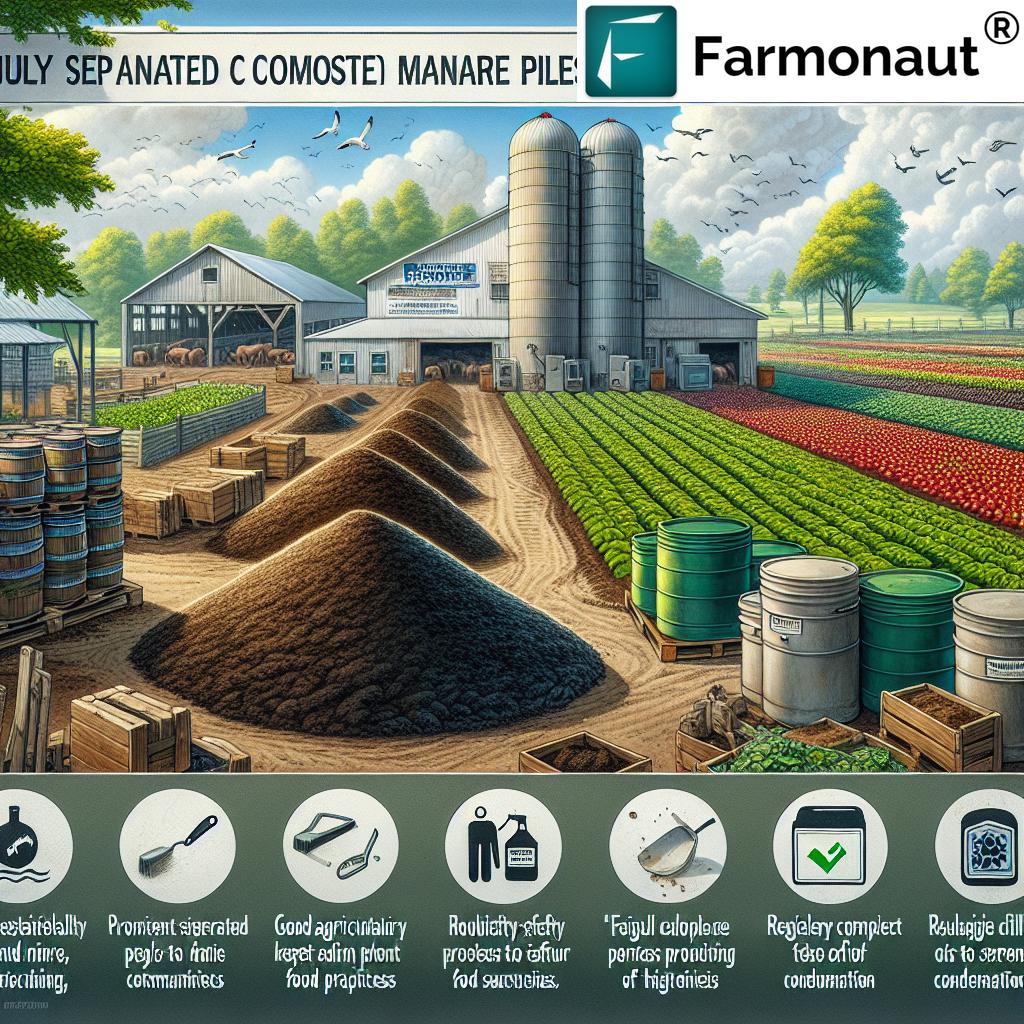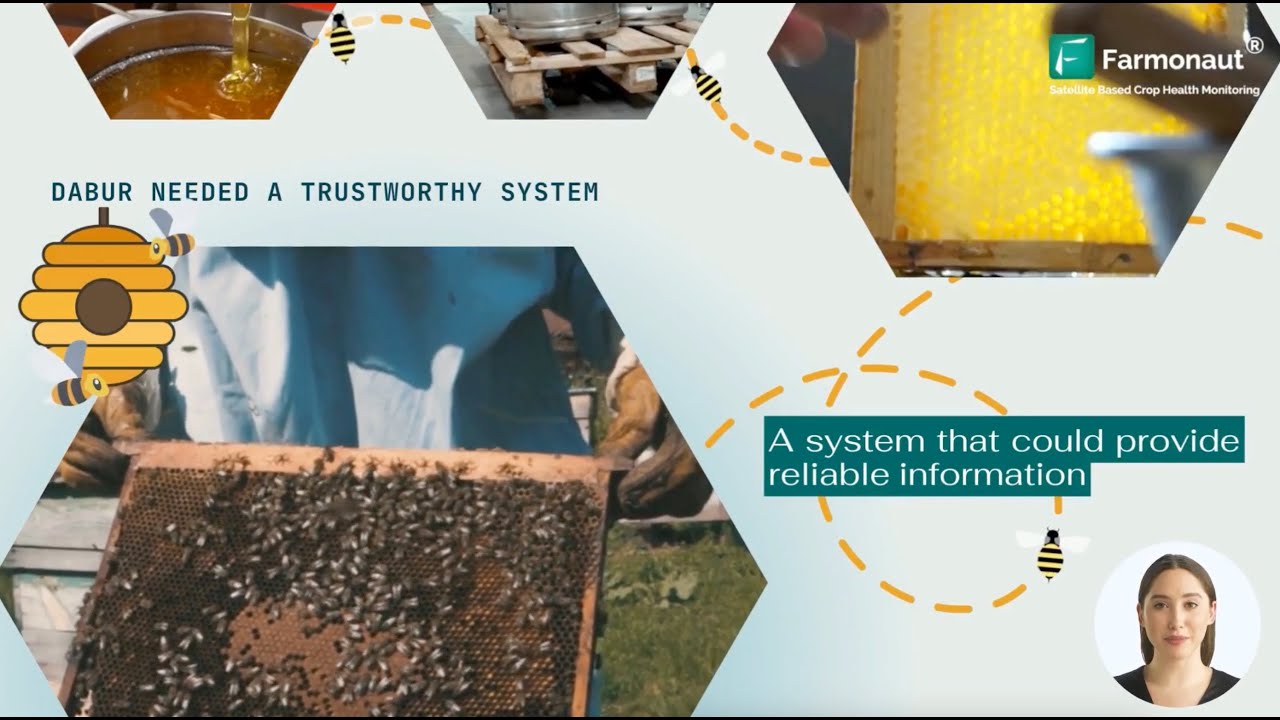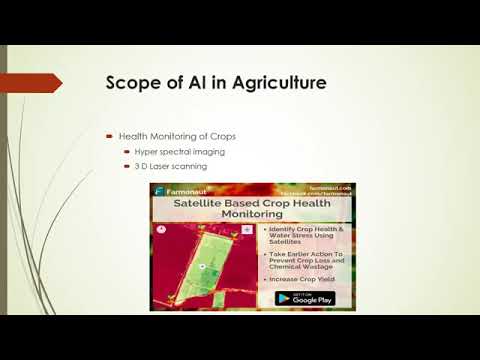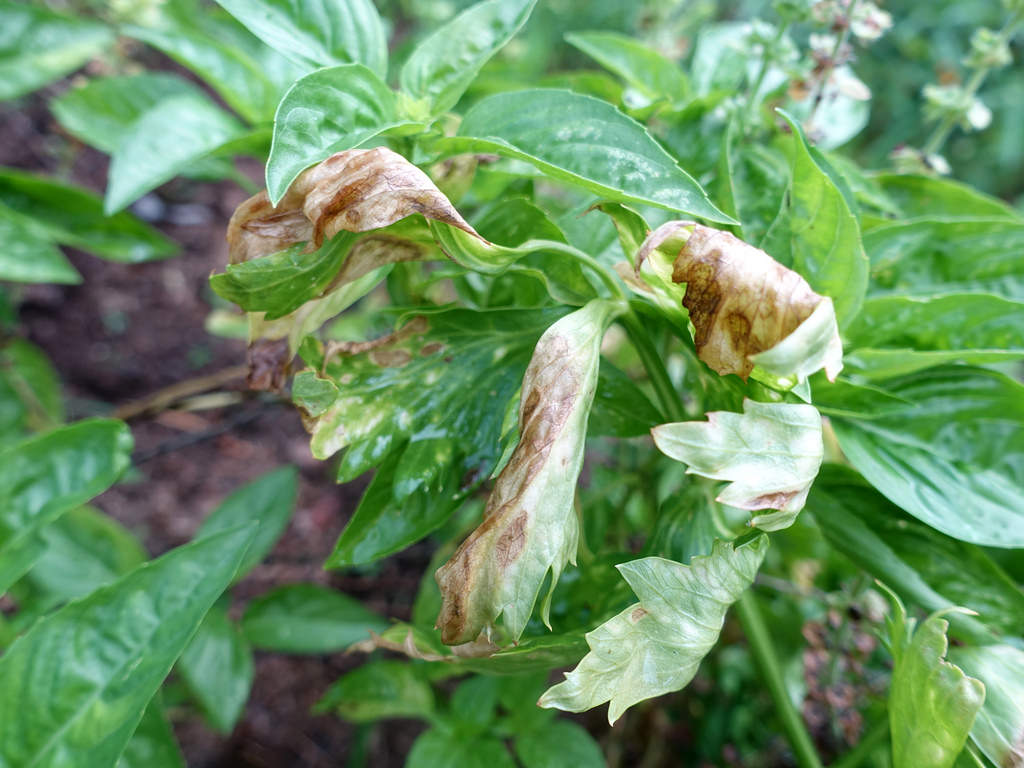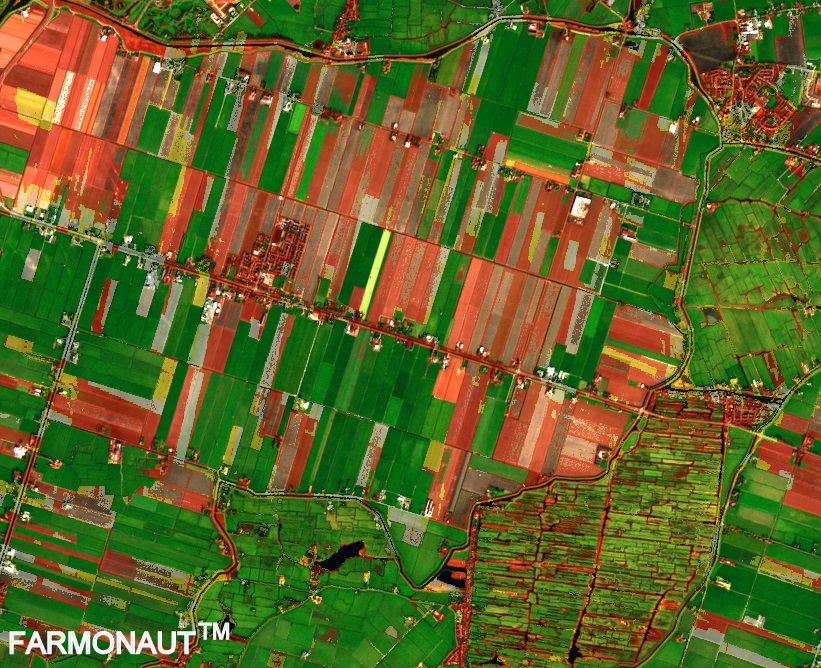Foodborne Illness Prevention in Agriculture: 7 Practical Tips for Safe and Sustainable Food Supply
Summary:
Foodborne illnesses pose ongoing and significant challenges for the agriculture, farming, and forestry sectors worldwide. These illnesses, often triggered by pathogens such as bacteria, viruses, and parasites, result in major public health issues and severe economic losses in the industry. Preventing foodborne illnesses in agriculture requires a comprehensive approach, blending Good Agricultural Practices (GAPs), proper water management, sustainable manure handling, rigorous worker hygiene, and full regulatory compliance.
Table of Contents
- Trivia: Foodborne Illness & Water Quality
- Introduction: Why Food Safety in Agriculture Matters
- 1. Good Agricultural Practices (GAPs): The Foundation
- 2. Ensuring Water Quality & Managing Water Contamination in Farming
- 3. Manure Management for Food Safety
- 4. Worker Hygiene and Training: Safeguarding the Supply Chain
- 5. Regulatory Compliance in Agriculture & Produce Traceability Systems
- 6. Innovative Approaches: Probiotics, Vaccines, and Pathogen Control in Crops
- 7. Clean Equipment, Field Handling, and Storage Best Practices
- Comparative Best Practices Table
- Trivia: Manure Mismanagement & E. Coli Risk
- Farmonaut’s Role in Foodborne Illness Prevention (Technology in Action)
- Frequently Asked Questions (FAQ)
- Conclusion
“Up to 48 million Americans get sick from foodborne illnesses yearly—proper water quality in agriculture can reduce this risk significantly.”
Why Food Safety in Agriculture Matters: Global Risks, Local Solutions
Food safety in agriculture is fundamental to protecting public health and ensuring a sustainable, trustworthy food supply. Across the globe, foodborne illnesses cause tremendous health and economic impact. In the U.S. alone, foodborne pathogens contribute to tens of millions of illnesses each year. Agricultural stakeholders—farmers, workers, food manufacturers, and supply chain partners—must constantly address the risks of contamination from bacteria (e.g., E. coli, Salmonella), viruses (e.g., Norovirus, Hepatitis A), and parasites (e.g., Cryptosporidium).
These pathogens can infiltrate at various points: irrigation water, manure application, handling practices, and even during harvesting/storage. Adhering to science-based food safety in agriculture guidelines and implementing good agricultural practices (GAPs) are therefore vital in both developed and developing food systems.
This comprehensive guide covers 7 proven strategies for preventing foodborne illnesses in agriculture, summarized by globally recognized best practices and emerging technology. The aim: to foster a safer, more sustainable, and more resilient agricultural industry.
1. Good Agricultural Practices (GAPs): The Foundation of Foodborne Illness Prevention
Good Agricultural Practices (GAPs) form the cornerstone of food safety in agriculture. Implementing GAPs is crucial for minimizing the introduction, survival, and spread of pathogens from farm to table. These science-based guidelines encompass every aspect of the food production process and are designed to prevent contamination at every stage.
-
Site Selection & Soil Assessment:
Selecting land for cultivation requires knowledge of prior use and exposure to manure or contaminated water. Soils previously used for animal grazing, waste disposal, or effluent application must be thoroughly tested for current microbial persistence and risk.
-
Irrigation Water Management:
Ensure you are using potable water for irrigating edible crops. Frequent testing for contaminants (E. coli, fecal coliforms, Giardia, Cryptosporidium) is vital to reducing the risk of foodborne illnesses. Read more about site/water handling for food safety
-
Field Management:
Regularly maintain clean fields by keeping animals away from crop areas, cleaning up waste, and removing fallen produce from the ground. Cross-contamination risk increases dramatically from wildlife or livestock intrusion.
-
Harvesting, Tools & Storage:
Clean and sanitize all equipment and storage bins. Avoid the use of tools that have come into contact with soil or manure near edible foods. Dive deeper into safe field and harvesting practices
-
Worker Health & Hygiene:
All workers must be trained to wash hands with soap and water regularly, recognize early signs of illness, and report symptoms immediately. Proper hygiene training is the linchpin of reducing illness outbreaks.
Key Takeaway
GAPs provide a comprehensive approach that encompasses water quality, manure management, worker hygiene, and more. They require continual education, regular monitoring, and consistent implementation to be effective.
2. Ensuring Water Quality & Managing Water Contamination in Farming
Water contamination in farming is among the leading causes of pathogen introduction to crops. From irrigation water quality standards to post-harvest washing, every step involving water is a critical control point for food safety in agriculture.
Key Components of Safe Water Management
-
Source Quality:
Only use clean water sources for irrigation and produce washing. If using well, river, or pond water, implement a regular schedule of testing for pathogens and chemical contaminants. Address all findings swiftly. Learn more about agricultural water quality
-
Irrigation Methods:
Adopt subsurface drip irrigation or other techniques that limit direct water contact with the edible parts of crops. Sprinkler and flood irrigation pose higher contamination risks, especially for leafy greens and salad vegetables. More on irrigation methods and water safety
-
Maintenance & Timing:
Maintain all pipes, hoses, and tanks to reduce the proliferation of microbial films. Whenever possible, irrigate early enough to allow foliage to dry before harvest, removing moisture that could support pathogen survival.
-
Training for Workers:
Teach farm workers about the symptoms of foodborne illnesses and how contaminated water can affect crops. Encourage reporting and proactive maintenance of water infrastructure.
These collective practices help not only in meeting irrigation water quality standards, but also in preventing the introduction of dangerous pathogens to the food supply.
Example: How Water Management Prevents Foodborne Illnesses
- If water from an untreated pond upstream is used to rinse leafy greens, the risk of E. Coli and Salmonella contamination increases sharply.
- Switching to potable well water or treating surface water can reduce this risk by over 90%.
For modern & sustainable food safety, digital monitoring can help. Farmonaut’s crop health monitoring uses satellite-based insights to help users identify problematic zones, track water stress, and optimize irrigation schedules—supporting farms to make data-driven water management decisions for safer and more productive yields.
3. Manure Management for Food Safety: Keep Nutrients, Remove Pathogens
Using manure as an organic fertilizer boosts soil health and reduces the need for synthetic inputs. However, manure mismanagement can dramatically elevate the risk of pathogen contamination in food crops, contributing to outbreaks of E. coli, Salmonella, and Listeria. Proper handling and application of manure are thus critical for preventing foodborne illnesses.
Manure Management Best Practices
-
Treatment:
Compost manure thoroughly before application. High temperatures during composting can kill most disease-causing microorganisms. Composting guide for food safety
-
TIming of Application:
Adhere to strict intervals between the last manure application and harvesting edible crops. The commonly used rule is at least 120 days for crops in contact with soil, and 90 days for crops not in contact. These windows allow most pathogens to die off naturally.
-
Storage:
Store raw manure far from crop fields, irrigation water, and packing facilities to avoid runoff and accidental spread.
-
Dedicated Equipment & Tools:
Use separate equipment for handling manure and produce—cross-contamination must be prevented at all costs.
-
Training Workers:
All workers should be educated in safe manure handling procedures. This includes wearing gloves, using dedicated tools, and reporting accidents.
Following these strategies as part of a comprehensive approach to manure management for food safety reduces the risk of severe outbreaks linked to contaminated produce.
“Manure mismanagement can increase E. coli contamination by 30%; sustainable handling practices are crucial for food safety.”
4. Worker Hygiene and Training: Empowering Safe Processing and Handling
Untrained or ill personnel are a major vector for foodborne pathogens entering the food supply. Effective worker hygiene and training programs remain the most direct methods to stop the spread of disease and ensure safe food production. Every farm, regardless of size, must prioritize comprehensive hygiene standards and ongoing education.
Key Elements of Worker Hygiene & Training
-
Comprehensive Initial & Refresher Training:
- All workers should receive initial food safety and hygiene training upon hiring.
- Annual or seasonal refreshers on best practices for proper hand washing, illness reporting, and contamination prevention protocols.
- Discover worker hygiene training essentials
-
Sanitary Facilities:
- Install accessible and well-maintained handwashing stations with soap, water, and single-use drying materials. Facilities should be within reasonable distance of work areas.
-
Enforcement & Audit:
- Assign supervisors to ensure adherence to hygiene protocols and mandatory reporting of illness symptoms.
-
Protective Equipment:
- Provide gloves, masks, or aprons where necessary, and train in their correct use and replacement.
-
Illness Management:
- Workers who show evidence of illness (vomiting, diarrhea, fever, visible infections) must not handle produce or engage in activities that may contaminate equipment, crops, or water sources.
Consistent education and strict enforcement of hygiene reduce contamination risks and, when combined with regulatory oversight, create safer produce for public consumption.
5. Regulatory Compliance in Agriculture & Produce Traceability Systems
Modern agriculture must comply with stringent regulatory standards to ensure food safety, protect public health, and open access to domestic and international markets. Regulatory compliance in agriculture provides the minimum food safety threshold, while produce traceability systems guarantee accountability and rapid response to illness outbreaks or product recalls.
The FDA Food Safety Modernization Act (FSMA)
- Scope: FSMA empowers the FDA with authority to oversee and enforce food safety rules—applying to growers, packers, processors, and suppliers. See more at FSMA overview
- Requirements: The act stipulates mandatory preventive controls, regular auditing, risk-based inspections, and swift recall authority when food safety is compromised.
- Compliance: Adherence is not optional for food producers. Noncompliance can bar produce from major markets, increase liability risk, and cause substantial losses.
Produce Traceability Systems
- Purpose: Track produce at every stage from farm to distribution center to retail point. Traceability allows rapid identification, isolation, and removal of contaminated products, limiting the scope of illness outbreaks.
- Technology: Modern systems use barcodes, digital ledgers, and, increasingly, blockchain to lock in reliable, tamper-resistant records. Produce traceability explained
- Benefits: Protects brand reputation, increases consumer confidence, strengthens regulatory compliance, and, most importantly, protects public health.
Farmonaut offers blockchain-based traceability solutions to reinforce supply chain transparency and food safety. Our system ensures each batch’s journey is recorded in an immutable digital ledger, allowing producers, buyers, and consumers to quickly verify sources and actions taken at each step.
Interested in integrating advanced traceability systems? Discover Farmonaut’s satellite and weather data API or review our API developer documentation.
6. Innovative Approaches: Probiotics, Vaccines, and Pathogen Control in Crops
As pathogens and contamination risks develop with changing climates and evolving agricultural methods, innovative solutions become crucial in the preventing foodborne illnesses.
-
Probiotics in Feed:
Adding probiotics (beneficial bacteria) to animal diets reduces the shedding of dangerous pathogens like Salmonella, E. coli, and Campylobacter, which then decreases contamination in manure and runoff (reference).
-
Vaccines for Livestock & Crops:
Vaccines can further decrease the presence of harmful microorganisms in animals before entering the food supply. Plant vaccines and novel biologicals are being developed for use in crops.
-
Bacteriophages & Antimicrobial Agents:
Bacteriophages (viruses that target bacteria) can be applied to crops to control pathogen populations on produce surfaces. Natural and synthetic antimicrobial agents are used to sanitize produce and processing environments more effectively (reference).
These methods, when combined with GAPs, strengthen the entire food safety net—protecting global populations and securing the food supply chain.
Sustainability Impact
Adopting such cutting-edge methods not only curbs illness outbreaks, but also reduces reliance on chemical disinfectants and other interventions that may carry environmental costs.
If sustainable farming and environmental monitoring are key interests, Farmonaut’s carbon footprinting platform provides precision tracking of field activities—empowering sustainable choices alongside food safety priorities.
7. Clean Equipment, Field Handling, and Storage Best Practices
Every year, cross-contamination during harvesting, equipment use, and storage contributes to foodborne illness outbreaks. It’s not enough to fix just one part of the chain—success requires integrated, regular sanitation protocols and targeted worker training.
Guidelines for Clean Equipment and Safe Handling
-
Routine Cleaning and Disinfection:
- All harvesting tools, bins, and storage facilities should be rigorously clean and sanitized before and after use.
- Sanitizers must be approved for use around food and utilized as directed.
-
Prevent Cross-Contact:
- Separate tools for manure and food handling should be maintained—and color-coded where practical for quick verification.
-
Safe Storage:
- Harvested produce must be stored in clean, dry, and protected environments to prevent proliferation of microbes.
- Temperature and humidity monitoring should be part of large-scale digital farm management protocols.
-
Regular Audits:
- Create schedules for checking and maintaining all storage and handling infrastructure.
Emphasize a “clean at every stage” mentality to build a culture of quality that permeates the entire food supply.
Comparative Best Practices Table: 7 Core Prevention Strategies
| Tip/Strategy | Description | Recommended Action | Estimated Effectiveness | Sustainability Impact |
|---|---|---|---|---|
| Good Agricultural Practices (GAPs) | Science-based guidelines ensuring food safety from site selection to harvest. | Implement GAPs, regularly assess risks, educate staff. | Up to 70% risk reduction overall when consistently applied. | Supports resource conservation and biodiversity. |
| Water Quality Management | Ensures clean, potable water for irrigation and processing. | Test water; treat or switch sources as needed; upgrade irrigation methods. | Reduces foodborne illness risk by up to 90% for irrigated crops. | Reduces need for chemical interventions. |
| Manure Management | Safe composting and time-restricted application of manure to food crops. | Compost manure; observe pre-harvest intervals; segregate tools. | Cuts E. coli and Salmonella risk by at least 60%. | Promotes soil health and reduces chemical inputs. |
| Worker Hygiene and Training | Prevents disease transmission from workers to produce. | Train all staff; enforce hand washing; provide facilities. | Proper handwashing reduces contamination up to 80%. | Limits disease spread; supports community health. |
| Regulatory Compliance & Traceability | Meeting legal food safety standards and enabling rapid recalls. | Adhere to FSMA, implement traceability records (digital/blockchain). | Facilitates tracing/removal of 95% of affected product within days. | Increases transparency, reduces waste, builds trust. |
| Innovative Approaches | Use of probiotics, vaccines, and bacteriophages. | Integrate new biotech tools (probiotics, vaccines, antimicrobials). | Reduces certain pathogen loads by up to 70–90% (varies by tool). | Promotes eco-friendly disease control. |
| Cleaning & Storage | Sanitation of equipment/tools and safe, dry storage of produce. | Disinfect tools; separate equipment; monitor storage environments. | Lowers risk of cross-contamination by up to 85%. | Reduces spoilage and chemical use. |
Farmonaut’s Role in Foodborne Illness Prevention: Technology for Safer, Smarter, Sustainable Agriculture
Leveraging technology is critical for future-ready farms. At Farmonaut, we empower the global agriculture sector with tools that increase productivity—and advance food safety in agriculture—through:
-
Satellite-Based Crop Health Monitoring:
- Our AI-driven platform delivers real-time data on vegetation health, soil moisture, and stress levels so farmers can identify potential risk zones—helping optimize irrigation, water management, and pest control for sustainable cultivation.
-
Blockchain-Based Product Traceability:
- We provide end-to-end traceability solutions so growers, agribusinesses, and the food industry can meet regulatory compliance and accelerate transparent recalls, reducing outbreak impact and maintaining public trust.
-
AI Advisory & Jeevn AI:
- Personalized, AI-powered recommendations for water application, pest management, and input optimization help farmers follow best practices for food safety and environmental sustainability.
-
Carbon Footprinting:
- We support sustainable farming not just in food safety, but in monitoring, reporting, and minimizing environmental footprints. Track carbon emissions from field to fork for responsible production.
-
API Access, App-based Management, and Developer Tools:
- Access our satellite weather and field data API or automate safety compliance with our developer documentation.
-
Fleet and Resource Management:
- Optimizing logistics helps reduce overlap, save fuel, and avoid biosecurity hazards between multiple farm sites or activities.
Our mission is to make precision agriculture affordable and accessible for all. Satellite-based verification for loans and insurance ensures farms receive needed support without additional risk of disease or fraud.
Ready to transform your farm with safe, traceable, and sustainable agriculture management? Explore the Farmonaut App
Frequently Asked Questions (FAQ)
Q1. What are the most common causes of foodborne illness in agriculture?
A: The most common causes include pathogenic bacteria (e.g., E. coli, Salmonella), viruses (e.g., Norovirus, Hepatitis A), and parasites contaminating crops through unsafe water, improperly handled manure, animal intrusion, poor worker hygiene, or dirty equipment.
Q2. Why is water quality so important for food safety?
A: Water can carry pathogens to crops. Using potable water for irrigation and washing, and regular testing, are crucial for preventing contamination that can lead to widespread outbreaks.
Q3. How can smallholders implement food safety measures affordably?
A: By focusing on knowledge (training, GAPs), low-cost infrastructure (handwashing stations), using secure water sources, and leveraging digital platforms like Farmonaut for monitoring and traceability, smallholders can effectively improve food safety without large capital investment.
Q4. What is the role of traceability in controlling foodborne illnesses?
A: Traceability systems enable rapid identification and recall of contaminated produce, contain outbreaks, reduce liability, and protect brand reputation in the supply chain.
Q5. Can sustainable farming reduce the risk of foodborne illnesses?
A: Yes. Sustainable practices—like correct manure composting, water recycling, and digital monitoring—not only protect the environment but also reduce contamination risks for safer food.
Conclusion: A Safer, More Sustainable Food Future
Preventing foodborne illnesses in agriculture begins with a holistic, science-backed, and sustainability-oriented approach. By adopting GAPs, strict water and manure management, continuous worker training, robust regulatory compliance, and leveraging innovative technologies, the food system can minimize contamination and protect public health worldwide.
With tools and technology from platforms like Farmonaut, farms of all sizes can now monitor, plan, and optimize every aspect of their operation. This helps ensure compliance with food safety laws, traceability requirements, and the growing need for transparency. Most critically, it allows for responsible stewardship of our shared natural and human resources—cultivating a future where safe, nutritious food is accessible to all.
Start your journey to safer, smarter agriculture with Farmonaut today.



